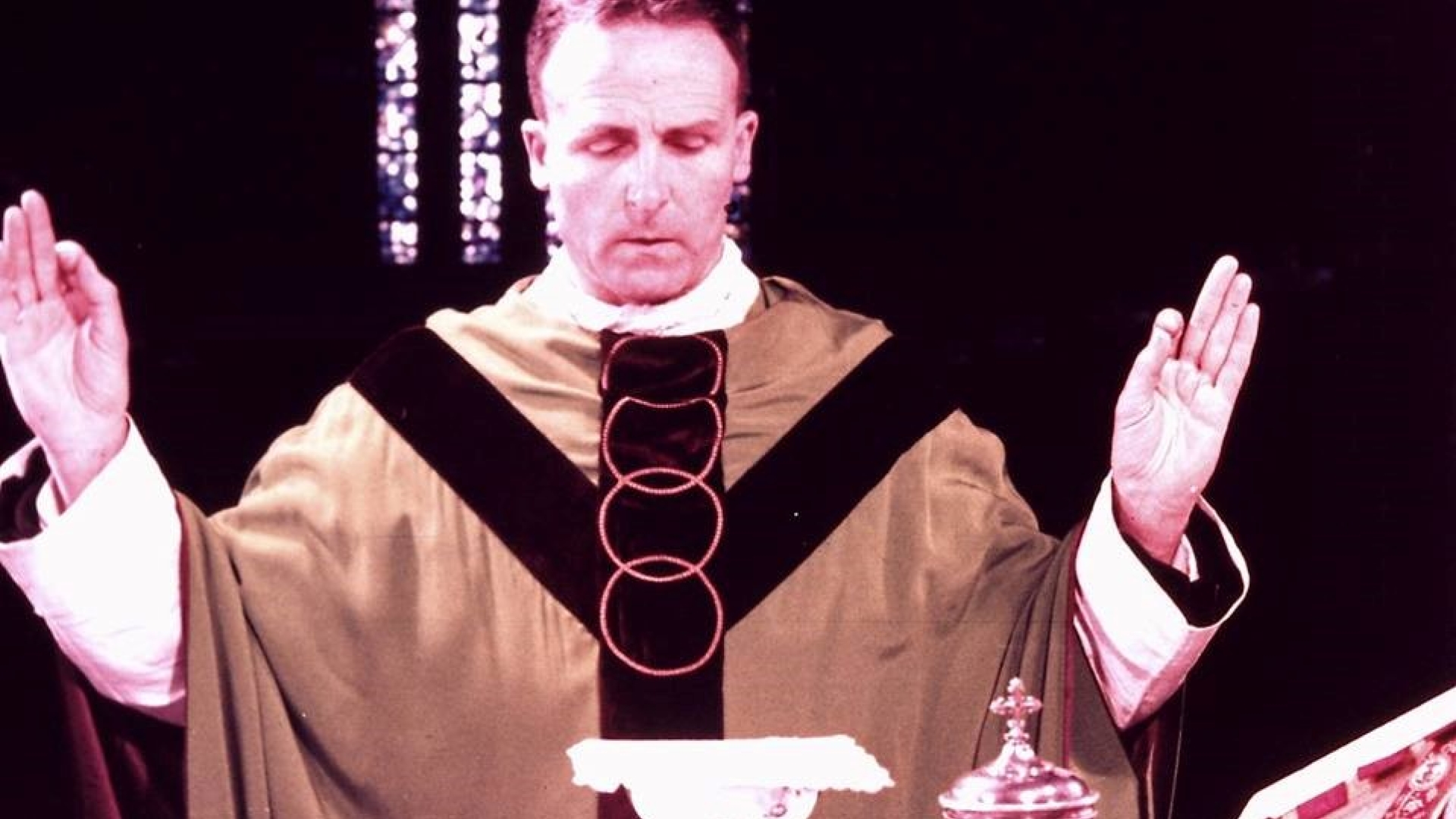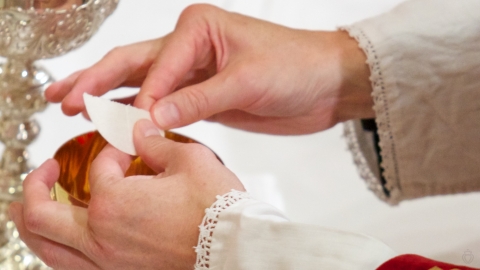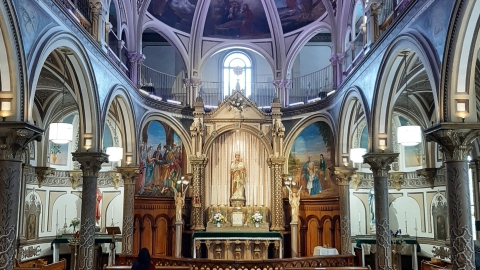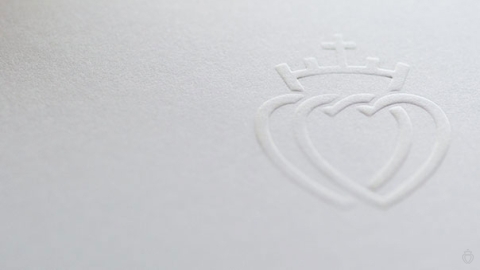50 Years of the New Mass: Dom Gaspar Lefebvre and His Missal (10)

Dom Gaspar Lefebvre en 1957
Born of Benedictine fathers, the Liturgical Movement for a long time will see its history linked to that of the Order of Saint Benedict. The Movement, which sprung specifically from the French congregation and Dom Guéranger, would grow and quickly spread beyond the borders of France. Indeed, the expulsion of the religious (laws of 1880 and 1903) for a time would shift the Liturgical Movement’s center of gravity towards Belgium. Dom Lefebvre is a prominent representative.
Pierre Gaspar Lefebvre was born in Lille on June 17, 1880. He studied at the abbey school of Maredsous, and took the habit there in 1899, made his profession in 1900, and was ordained a priest in 1904.
On July 10, 1906, he sailed for Brazil with his master, Dom Gérard van Caloen, charged with reforming the Brazilian Benedictine Congregation. Dom Lefebvre would later hold various positions (sub-prior, prior, etc.) in several Brazilian abbeys.
In May 1914, he returned to Europe to seek money and men to benefit the work in Brazil. Blocked in Lille by the war, he tried his hand at pastoral ministry, began to publish small liturgical commentaries and founded a modest review, The Voice of the Church. Solicited by the abbot of Saint-André-lez-Bruges in Belgium, he joined this abbey, of which he became prior from 1919 to 1926.
A Life Dedicated to the Liturgy
It was during this period that he began his liturgical work. Dom Lefebvre, in fact, was heavily influenced by Dom Guéranger (his father read from The Liturgical Year every day) and by Dom Columba Marmion (who was his professor of theology and his superior): “All that I wrote, I got from Dom Marmion,” he said. He was also inspired by the example of van Caloen, who had prepared a missal that was published by Desclée in 1882 (incomplete and inconvenient, it was not widely disseminated).
In 1919, Dom Lefebvre founded a concrete and practical review, the Parish Liturgical Bulletin, especially for priests, mass servers, sacristans, and cantors.
In 1920, he launched his daily and vesperal Missal in installments, the first volume of which appeared in 1921. He gradually produced eighteen versions, each adapted to different audiences. The success was enormous: in three years, more than 100,000 copies of the first edition were sold. In all there would be more than eighty editions, as well as versions in foreign languages (English in 1924, Spanish in 1930, Polish in 1931, Italian in 1936, Portuguese in 1939, etc.). There would also be many editions for his own diocese, or one for this or that congregation. It is thus possible that, in its various forms, the sales of Dom Lefebvre’s Missals can be counted in the millions.
The purpose of this missal was to make the liturgy known and loved according to its traditional meaning and with all its theological and spiritual riches, and to help the faithful better unite with the mystery of Christ immolating Himself on the altar for the glory of His Father and the salvation of souls. The presentation is clear and very educational, which explains its lasting success and popularity, despite the profusion of other missals which appeared in its wake, without however achieving its quality.
Author of Numerous Works
Dom Gaspar Lefebvre published a number of volumes devoted to the liturgy: e.g., Month of May, Linking Mary to the Liturgy; How to Understand the Mass; Liturgy and Catholic Action; Redemption Through the Blood of Jesus; The Magnificence of the Precious Blood; Meditations on the Liturgical Year; Christ the Life of the Church; The Spirit of God in the Holy Liturgy, etc.
But, apart from his masterpiece which is the St. Andrew Missal, his flagship work is Catholic Liturgy: Its Fundamental Principles, first published in France in 1920 by the Abbey of Saint-André-lez-Bruges itself. This book perfectly translates the theocentric orientation of the liturgy according to the correct vision of Dom Lefebvre. The incipit is very clear on this subject: “If anyone denies that the world was created for the glory of God: let him be anathema,” says the First Vatican Council. And the first four chapters of the book abundantly develop this orientation: “The official cult of adoration”; “The Holy Trinity”; “To the Father through the Son in the Holy Spirit”; “Through the Church to God.” It is only after having laid these solid foundations that Dom Lefebvre shifts his attention to the various points of the liturgy: the mass, communion, the sacraments, the divine office, the liturgical cycle, etc.
Dom Gaspar Lefebvre entered into eternity on April 16, 1966.
The Meaning of the Liturgy
For Dom Lefebvre, the essence of the liturgy would be well summed up by the first words of the mass: “Introïbo ad altare Dei,” “I will go in unto the altar of God,” to adore Him, to praise Him, to thank Him, to bless Him. Certainly, the St. Andrew’s monk knew and explained that the liturgy is source of Christian life and sanctification, and even its “first and essential source” (in the words of St. Pius X). But he also knew that this sanctification should not be sought for itself, but rather as a condition for orienting oneself more profoundly towards the “praise of glory” of the Holy Trinity, which consequently entails, God being diffusive of His goodness and His bliss, the happiness of the spiritual creature.
It is certain that Archbishop Marcel Lefebvre was deeply marked by the Liturgical Movement, which was very powerful in Northern France at the time of his birth and during his residence there. The statutes and the spirit of the Society of Saint Pius X bear witness to this profusely. But it relates much more to Dom Gaspar Lefebvre’s orientation than to Dom Lambert Beauduin’s ideas (progressively rendered more and more clearly deviant), even if both had had Dom Marmion as their master.
The two Lefebvres were also distant cousins: they have a common ancestor from back in the 18th century, Jean-Baptiste Lefebvre (1745-1790). And it was at Dom Gaspar Lefebvre’s abbey that Archbishop Lefebvre wanted to make the preparatory retreat for his episcopal consecration in 1947, thus showing his esteem for the liturgical and spiritual work of the author of the Missal.
To know, to love, and to practice the liturgy coming from the Tradition of the Church, in order to live it, is certainly the heritage received by Archbishop Lefebvre from the healthy part of the Liturgical Movement, particularly well represented by Dom Gaspar Lefebvre and all his works.
Related links
- 50 Years of the New Mass: St. Pius X and the Liturgical Movement (9)
- 50 Years of the New Mass: Fr. Emmanuel, Parish Priest of Mesnil-Saint-Loup (6)
- 50 Years of the New Mass: The Tridentine Missal Put to the Test by Gallicanism …
- 50 Years of the New Mass: The Development of the Roman Missal (2)
- 50 Years of the New Mass: The Making of the Roman Missal (1)
(Source : FSSPX - FSSPX.Actualités - 01/02/2020)



